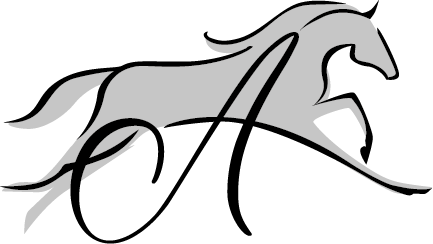Originale fünfstufige Skala von Obel
Die originale Skala von Nils Obel aus dem Jahr 1948 besteht aus fünf Stufen: dem Normalzustand und vier klar definierten Graden 1 bis 4. Je höher der Grad auf der Obel-Skala ist, desto stärker sind die Schmerzen des Pferdes:
| Normal | Pferd wirkt normal / schmerzfrei. |
| Grad 1 | Im Stand Hin- und Herwechseln des Gewichts, im Schritt unauffällig, im Trab auf der Geraden und in der Wendung steif. |
| Grad 2 | Im Schritt steif und vorsichtig, Wendung nur mit Mühe möglich, aber Vorderfuß kann aufgehoben werden. |
| Grad 3 | Das Pferd bewegt sich nur ungern, das Aufheben eines Vorderfußes ist nur mit großer Mühe möglich. |
| Grad 4 | Das Pferd bewegt sich nur, wenn es dazu gezwungen wird. |
Modifizierte Skala zur Beurteilung von Hufrehe
Aufbauend auf dieser Skala wurde vor einigen Jahren von Meier et al. eine modifizierte Obel-Methode, die QUT-Methode zur Diagnose und Schweregradbewertung von Hufrehe entwickelt. Hierbei werden fünf Kriterien (Gewichtsverlagerung, Aufheben der Vorderhufe, Gangbild im Schritt, Gangbild in der Wendung, Pulsation) auf einer Skala bewertet, das Ergebnis ergibt 0 bis 12 Punkte. Eine hohe Punktezahl geht mit hohen Schmerzen einher.
| Order of examination | Criteria | Description | Points |
| Stage 1 | |||
| Examine horse standing | Weight shifting | No weight shifting | 0 |
| Weight shifting – including shifting weight between all feet; lying down; and/or placing forelimbs in front of body | 2 | ||
| Gently lift each foot up and put back down straight away | Forelimb lift | Prompt and willingly maintained (each forelimb) | 0 |
| Reluctant and maintained with difficulty (each forelimb) | 1 | ||
| Unable to lift foot/resists attempts to lift foot (each forelimb) | 2 | ||
| Stage 2 | |||
| Conduct on hard surface. Walk horse approx. 30 m side-on to examiner | Gait at walk | Normal gait | 0 |
| Mild short, stilted gait – still moves willingly | 1 | ||
| Moderate short, stilted gait – reluctant/difficult to walk | 2 | ||
| Severe difficulty walking or unable to walk* *Do not force horse to walk; skip gait at circle and continue with digital pulse. | 6 | ||
| Turn on a short lead clockwise and anti-clockwise | Gait at circle | Normal circling | 0 |
| Mild head rise, difficulty when turning, still moves willingly | 1 | ||
| Moderate, sharp head rise, reluctance/difficulty turning | 2 | ||
| Severe difficulty turning, slow and clearly painful | 3 | ||
| Stage 3 | |||
| All feet must be square on ground (unless unable to stand) | Forelimb digital pulse | Normal – able to palpate, normal magnitude but not bounding | 0 |
| Increased magnitude or bounding digital pulse (each forelimb) | 2 |
Weitere Details zur modifizierten Obel-Skala können in dem online frei zugänglichen Paper von Meier, Alexandra et al. nachgelesen werden: A „modified Obel” method for the severity scoring of (endocrinopathic) equine laminitis. PeerJ 7 (2019): e7084. Am schnellsten findest du die Studie in Google Scholar, einer Suchmaschine für wissenschaftliche Texte.
